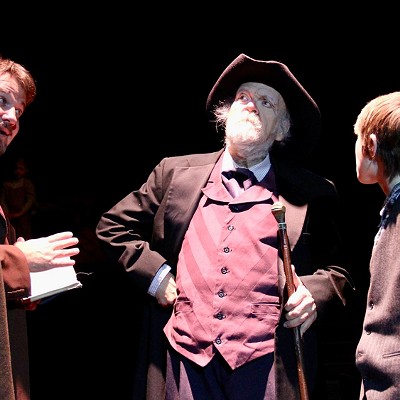
As a state agency, OAC receives funding from two sources: state appropriations and the National Endowment for the Arts (NEA) grant. While state dollars account for 85 percent of its budget and will remain at the current level of $4 million, the federal sequestration is expected to reduce the NEA grant by 6.6 percent.
And that means $47,600 less to invest in Oklahoma’s arts and cultural community, according to Amber Sharples, OAC executive director.
The council grants money to tribal entities, arts education, other arts councils and festivals, as well as community theaters, ballet companies and philharmonic productions statewide.
“The [grant] requests have gone up, which is very indicative of the fact that the organizations are having more difficulty securing funding,” Sharples said.
Each grantee must match the public money endowed by OAC with private funds that demonstrate a community investment in the program or organization.
There are three levels of grants: small grant support, major grant support and organizational support. Criteria used by the OAC for awarding grants includes the quality of the application, quality of the program and number of under-served individuals in the would-be grantee’s community.
But all of that is impacted by the amount of federal funding available to the arts council.

“Organizations in rural areas could be especially impacted because they don’t have foundations and resources available to them like organizations in metro areas,” said Joel Gavin, OAC director of marketing and communications.
The impending NEA cuts come on top of a $52,000 federal cut OAC absorbed in fiscal year 2012.
Despite the reductions to come, OAC officials said they will not be cutting any of their programs completely. However, each grantee, from the Cotton County Arts Council to the OK Mozart Festival in Bartlesville, will experience funding decreases.
Part of the equation
Arts advocates note that such cuts will have cultural and economic impact.
Every dollar of public funding generates about $8 in tax revenue for Oklahoma, according to OAC. Money spent on local hotel lodging, shopping and dining during festivals — such as June’s Red Earth Native American Cultural Festival in Oklahoma City — augments businesses statewide.
“The arts and cultural infrastructure is a major factor [in] why businesses relocate to different states,” Sharples said.
Lawton Community Theatre is one such organization that receives OAC grant money. The company, which receives nearly $38,000 from OAC, holds summer youth shows and young actor academies during the fall and spring.
“They’re the future of our theater,” said Cynthia Kent, the theater’s managing director. “They’re the audience and the volunteers and the artists of tomorrow.”
Kent said she doesn’t know which programs will suffer, but conceded staff cuts and lower production values are possible.
“[OAC funding] also lends huge credibility to our programming when we’re looking for money locally,” Kent said.
The theater receives funds from the city of Lawton, corporate sponsorships, individual contributions, ticket sales and Arts for All, a Lawton arts group.

production of 'Urine Town'
“Community theater is the grassroots theater of this country,” Kent said. “Aside from the art, aside from the value of learning and performing and seeing art, it’s a social network that brings people together, and people have the opportunity to learn from each other.”
OKC is home to 30 programs funded by the council, ranging from $2,003 given last year to the Oklahoma City Ballet to $98,000 to the Oklahoma Philharmonic Society.
“Each Oklahoman deserves to have access to the arts,” Sharples said.
Hey! Read This:











